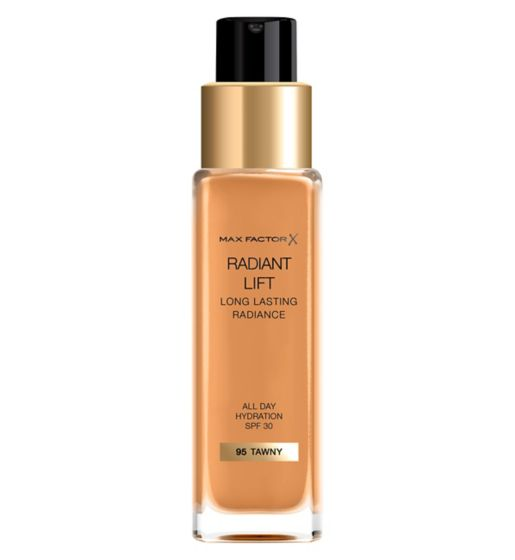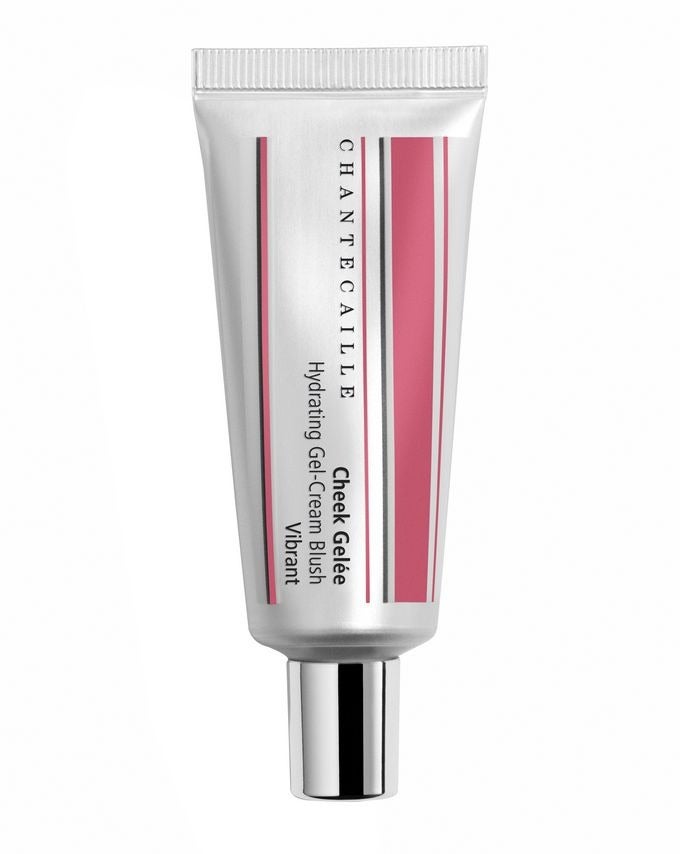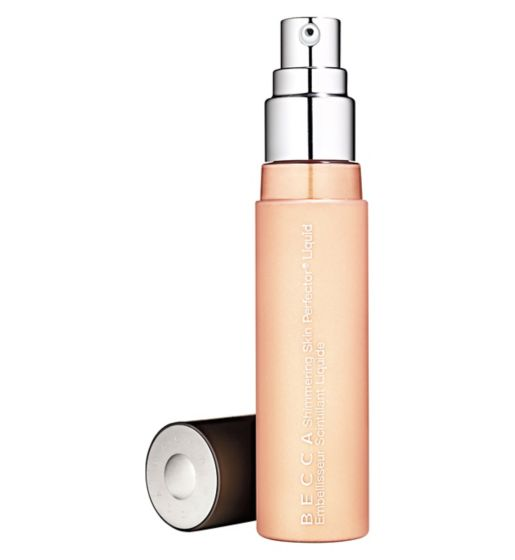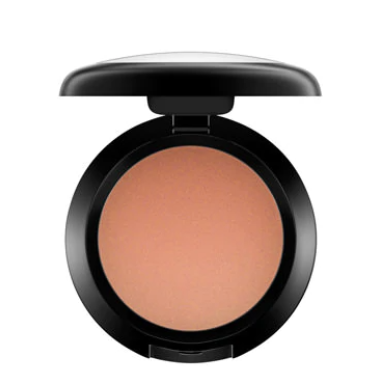I Spent 24 Hours With A Professional Makeup Artist & This Is What I Learned
Illustrated by Sydney Hass
As a beauty editor, I like to think I know a thing or two about makeup. I wear a full face every day and I'm lucky enough to spend time with some of the best beauty experts in the business, but as makeup artist Caroline Barnes recently pointed out to me, there's a hell of a lot I'm yet to learn. From how to apply blusher properly (apparently, I've been doing it wrong this whole time) to how to get unruly brows to stay in place all day (and I mean all day), here are the tips and tricks everyone needs to know, whether you're a total makeup obsessive or simply splash on concealer and go.
AdvertisementADVERTISEMENT
The angle of your mirror really matters
If your mirror is too low down, Caroline believes it could sabotage your look.
"Always look at yourself in an upwards direction when applying makeup as it’s a much more flattering angle," she said. "If your mirror is too low, pop it on some books. Naturally, many people put their makeup on downwardly, but you won’t get as much of a feelgood factor about yourself and your finished look. Mirrors should always be up high."
Your foundation turning orange could be something to do with the pH of your skin, not the environment
If you think you've found the perfect shade of foundation only to discover it has turned an unsightly shade of orange over the course of the day, you're not alone. But while many experts argue that the colour change is a result of pigments reacting with air (a.k.a. oxidation), Caroline suggests it might not be anything to do with that at all...
"From my current understanding, foundation going a little darker is a result of the pH in your skin," she said. "The oil in your skin might be affecting the pigment in the base that you’re wearing. Use a mattifying primer (R29 recommends Huda Beauty's Matte Perfection Pre-Makeup Base, £26) and blotting papers (try NYX Professional Makeup Matte Blotting Paper, £4) throughout the day to stop your skin from getting too oily. The shade change might also be a result of the powder you apply on top. Make sure it's translucent as not to make your face darker than the rest of your body."
AdvertisementADVERTISEMENT
Hair products make brilliant makeup fixers
We know what you're thinking: Aren't hair products for, well, hair? But gels and hairsprays work wonders to fix looks, especially brows, in place. Just be careful how you use them.
"I love brushing Bumble and Bumble's Sumo Gel, £23, through eyebrows because it really keeps them in place, but I like to use hairspray (sprayed onto a spoolie brush and combed through hairs – don’t spray directly onto your face), too," said Caroline. "I’ve also used soap in a similar way for years by scraping it onto a spoolie, but if you're going to do that, be sure to use clear soap because you don’t want to make your eyebrows look flaky."
Here's how to stop flashback from the SPF in your foundation
"SPF foundation looks fine in natural light but because it tends to be mineral SPF, it will leave a slight flashback in extreme light – that's because it's creating a physical block," said Caroline. "I like Max Factor's new Radiant Lift Foundation, £14.99, because it includes SPF 30 but it's lightweight. To minimise any flashback, apply a coloured face powder over the top of your foundation. Having that colour on top will reduce the flashback. If you use a translucent powder, you’ll still see the flashback. That said, if you know that you’re going to be in front of a flash, always use a foundation with no SPF in it – I rate and MAC's Studio Face and Body Foundation, £26. If you don't want to ditch the SPF entirely, I always suggest applying a chemical SPF before the foundation because it absorbs into the skin better."
AdvertisementADVERTISEMENT
Don't match your foundation to your face or neck. Instead, do this...
Forget your face and neck for a minute – you need to look at the colour of your chest to get the perfect foundation match.
"Your neck is hidden by the sun, so it's always going to be much lighter in comparison," said Caroline. "If you don't take the colour of your chest into consideration, your face will be disconnected from the rest of your body. You also have to match in daylight – there’s no question about it. If you’re buying from the high street and not being matched by a makeup professional, take a few spare containers so that you can pump the tester shade in. Take your tiny sample home, try it properly, look at yourself in the mirror and see if it's right for you. Also, take a photograph for yourself outside or by a window to see how it looks, but don’t use flash."
Applying foundation and concealer with your fingers could be better than a brush
Some makeup artists argue that you wouldn't paint a wall with your hands, so why apply foundation with them? In a way, it makes sense, but Caroline believes your fingertips can sometimes provide the best finish.
"Putting foundation on with your fingers gives you the full capacity of the colour as well as the connectivity because brushes aren’t warm. Fingers really manipulate the product into your skin better than a brush, which you might have to constantly change in terms of shape. Your hands can go all around your neck, so you get better coverage, and fingers lend skin a much more natural, rather than painted-on effect." And when it comes to concealer, applying a lighter shade around your nose and eyes will instantly lift your complexion. "Again, apply it with your finger over a foundation base to really push it into the nooks and crannies of your face – in between the nose and on your lids especially, to mask pigmentation."
AdvertisementADVERTISEMENT
So when should you not use your fingers?
"If you have downy hair, it might not be beneficial to use your fingers alone because the product might just sit there," said Caroline. "A brush is better in this instance because it lifts the product. If you’re getting ready in low light, for example when it’s dark on a winter's morning, I would always suggest going over your foundation with a brush for a more flawless finish – that’s my safety net, but it needs to be super soft, not dense. Use a stippling brush (like the Zoeva Stippling Brush, £15), if you have freckles you want to show off. The more dense the brush, the heavier the coverage. Buff foundation in using circular motions."
You're applying blusher all wrong
According to Caroline, a lot of us apply makeup, especially blusher, robotically. And no one wants to look like a doll, right?
"If I were to tell someone how to apply blusher correctly, I'd say to imagine you’ve got a big pair of Dior sunglasses on. Imagine your whole orbital area is concealed by these sunglasses. As long as your blusher doesn’t go within that area, you’re onto a good start. If you place your blusher too high and underneath your eyes, you’ll only distort your cheeks."
So where does it go? "There are two places for blusher, depending on what you want to achieve," said Caroline. "If you look directly in the mirror at your pupil, imagine a line coming straight down underneath it and smile – that will give you the peak of the apple of your cheek, right in the centre. It’s about using your eyes and facial bone structure. This will create a very youthful effect to your makeup." Caroline rates cream blush for this look. Try Chantecaille Cheek Gelee, £39.
If you want to create an angular effect, apply blusher to the high points of your face and simply take it across the cheek in a diagonal shape. This is the same for highlighter. "Choose a creamy, liquid texture so it moves into your skin and looks like actual skin," said Caroline. "I like Becca’s Shimmering Skin Perfector Liquid Highlighter, £34, MAC’s Cream Colour Base, £19, and Max Factor’s Miracle Glow Universal Highlighter, £10.99 – this one works on all skin tones and really stays put."
AdvertisementADVERTISEMENT

















